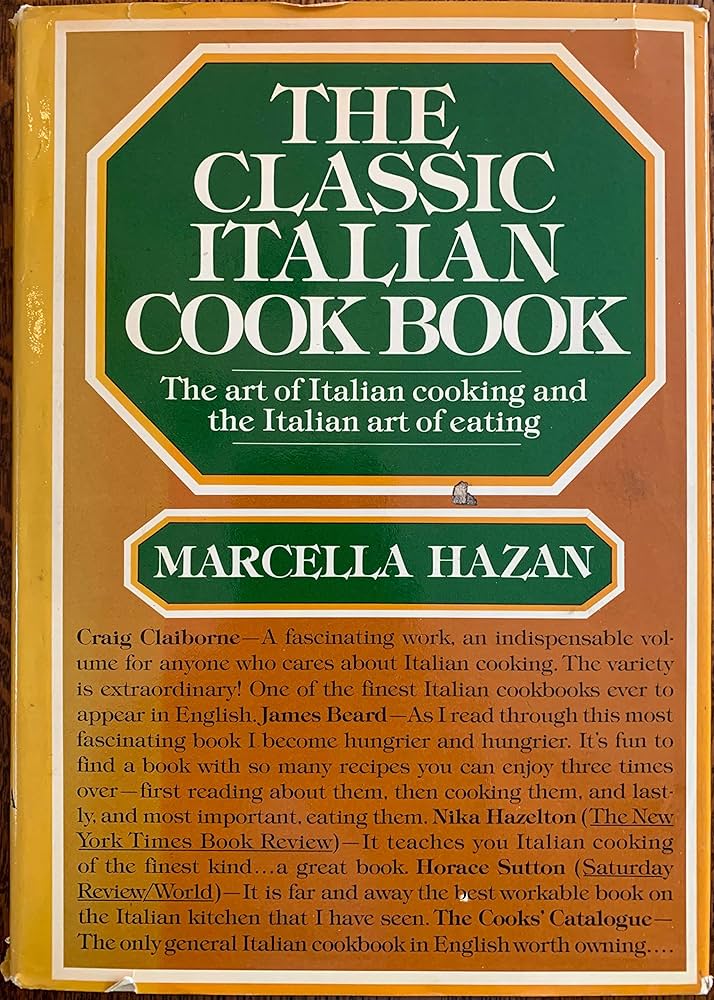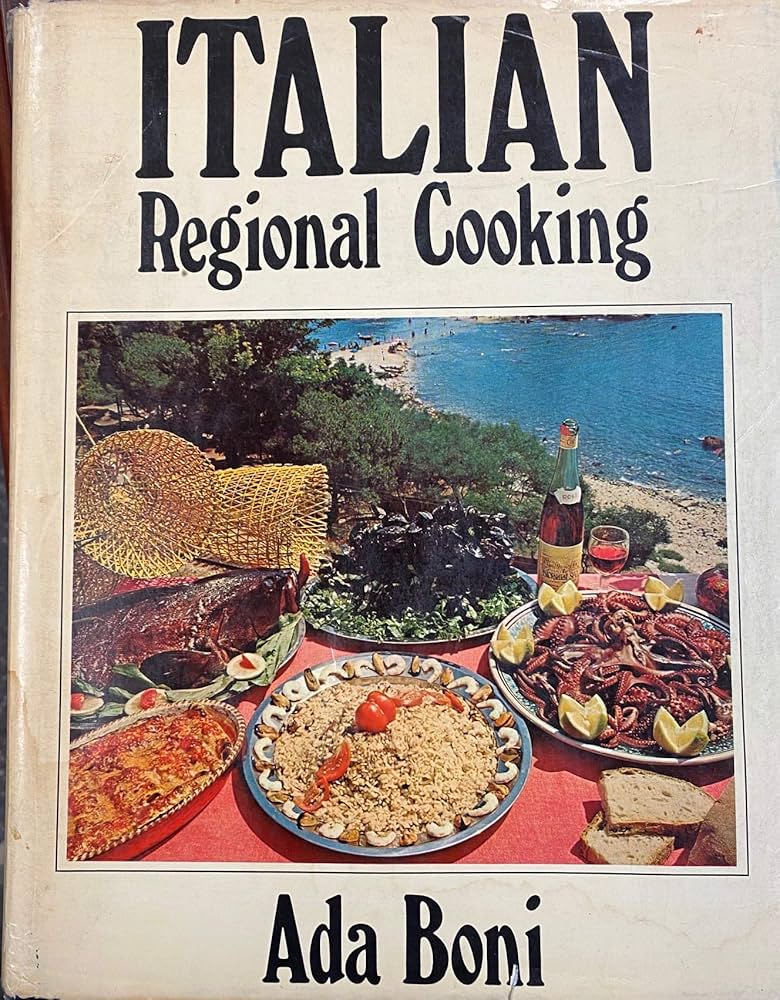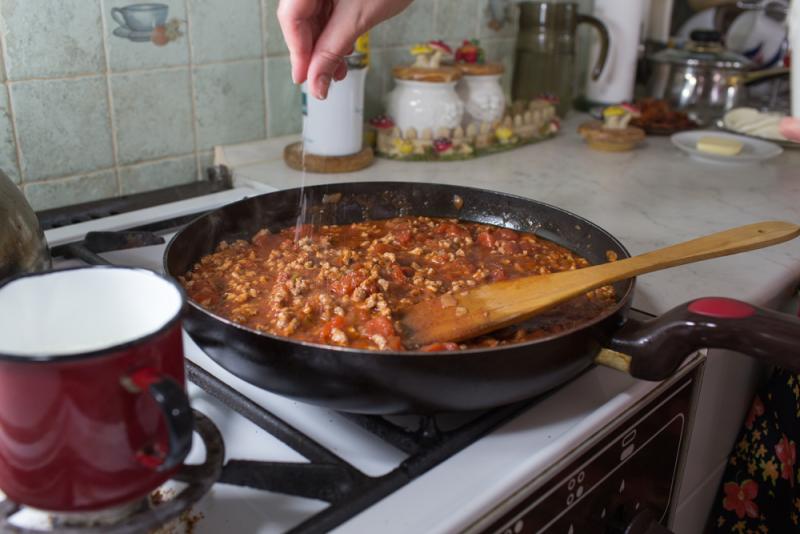There’s a gorge between what we consider Italian-American food and the cucina italiana that we know today, but there’s a throughline that connects the sauces and stews of the casalinghe of the old world and the red-sauce kitchens of the Little Italys throughout the United States. This bridge runs through the famous cookbooks that have influenced American kitchens since the Italians first set foot on Ellis Island.
Early iterations of Italian-American food — think Philly cheesesteaks and muffaletta sandwiches — were inventions of those working-class immigrants who melded the flavors of Italy with the ingenuity required to establish new lives on the other side of the Atlantic. But Italian food in its most unaltered form was introduced to the mainstream later, after World War II, and many dishes slowly became widely recognizable. This was in part owed to the cookbooks popular in those decades, which introduced cooks stateside to the simple, honest cooking of the country and its regional diversity.
From Pellegrino Artusi’s groundbreaking book first published in English in 1944 to the beloved works of Marcella Hazan in the ’70s, these four cookbooks chronicled the culinary traditions of an entire nation and influenced a whole new world of cooks.
Science in the Kitchen and the Art of Eating Well
By Pellegrino Artusi

This work by Pellegrino Artusi compiled the recipes of home cooks from across the country into a bible of Italian cooking. First published in 1891, it was a seminal work in Italy, a reference that was also essential in uniting the diverse cultures and traditions that persisted after Unification, using neutral language to evoke a singular cuisine. It wasn’t until the 1940s that it reached foreign bookshelves.
Artusi’s quirky anecdotes — like a run-in with cholera after a bowl of minestrone — and proverbs about health and wellness — he was a fan of “early to bed and early to rise makes a man healthy, wealthy and wise” — make the no-frills cookbook an enjoyable read.
The Classic Italian Cook Book
By Marcella Hazan

Hazan’s debut, The Classic Italian Cook Book: The Art of Italian Cooking and the Italian Art of Eating, first published in 1973, introduced Americans to the time-tested techniques of Italian cooking and the foundations of the Italian diet. Described as “the Julia Child of Italian cuisine,” Hazan pushed the boundaries of what Americans at the time understood to be Italian cooking, and returned to the simpler recipes of tradition, as opposed to the heavy, Americanized dishes that had become popular.
Hazan’s journey to cookbook fame began as a home cook in New York trying to recreate the flavors of her childhood in Italy through other cookbooks and her own memories. She taught lessons from her home before writing a recipe column for the New York Times. This would lead to her first book, which was followed by a sequel. The two, compiled in the Essentials of Classic Italian Cooking, which for today’s readers and home cooks is much more widely available, have won many awards. Her approach to teaching and cooking was untainted by the palates and habits of American custom, offering a look at the real-life ways Italians cook and eat.
Italian Regional Cooking
By Ada Boni

Boni’s cookbook Il talismano della felicità (The Talisman of Happiness) became a staple of Italian kitchens during the wartime era. Like Artusi, she was of the bourgeois class and embraced a personal mission to preserve the cuisine of her home through writing. But she disagreed with Artusi’s approach and questioned his authority on the subject, going so far as to deride his work in the introduction to her own book.
A few decades and a war that transformed European society divided them, with Artusi dying years before Il talismano was published. Perhaps these differences were largely generational in nature. Her English version Italian Regional Cooking was published in 1969 and offers a look at the diversity of traditional Italian recipes and cooking techniques, making it a beloved resource for home cooks beyond Italy.
The Silver Spoon

The Italian tome Il Cucchiaio d’Argento, or The Silver Spoon, birthed one of the most popular cooking websites in Italy today. Intended to be a comprehensive guidebook, with straightforward instructions for home cooks interested in the culinary diversity of Italy, Il Cucchaio d’Argento was first published in 1950 by Domus in response to pricing disputes about Boni’s book.
In 2005, an English edition of the book based on the Italian edition from a few years prior introduced a whole new era of cooks outside Italy to Italian culinary traditions and techniques, and quickly cemented itself as a classic.
Today, bookstore shelves are saturated with cookbooks on Italian cuisine of every conceivable category. Who’s to say what might be the next classic for a new generation of home cooks?













